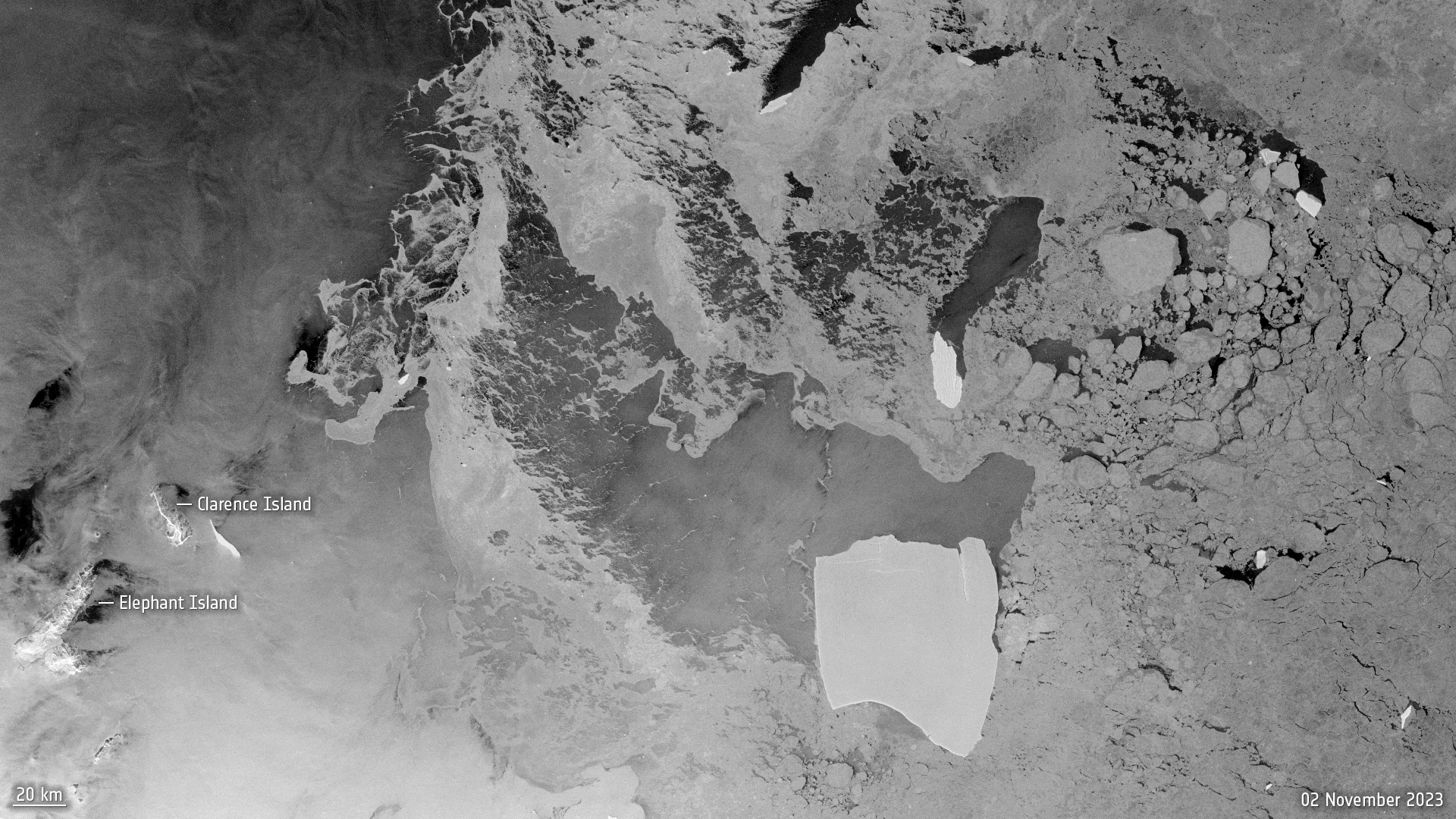In 1986, a gigantic iceberg separated from the Fichner-Ronne ice shelf in West Antarctica. It was so big that it became grounded, stuck to the seafloor, and remained in position for 40 years. Finally, it has now been pushed off the seafloor and has begun drifting in the Weddell Sea to a region in the South Atlantic called Iceberg Alley. Designated A23a, this monster berg measures 4000 sq km (1,500 square miles) and is about 400 meters (1,300 feet) thick – the world’s largest.
On the surface, A23a is about four times the size of New York City. But as is well known about icebergs, you must look below the surface, too. At 400 meters thick, the entire body of ice adds up to more than a trillion tons of frozen water.
ESA’s Copernicus Sentinel-1 satellite has been keeping an eye on the moving behemoth, which appears to be driven by winds and currents. Scientists estimate it is currently moving at a rate of about 4.8 km (3 miles) each day.
ESA said it is not unusual for icebergs to become grounded, but over time they shrink enough to unground and float.

Now that this iceberg is on the loose, scientists can’t predict exactly where it will go next. However, like most icebergs from the Weddell sector, A23a is likely to end up in the South Atlantic on Iceberg Alley.
While A23a is huge, it’s not the biggest ever. It is only about one-third the size of the biggest iceberg in recorded history, B-15 which calved off of Antarctica’s Ross Ice Shelf in 2000. The B-15 iceberg covered more than 10,878 square km (4,200 square miles) when it broke away, according to NASA’s Earth Observatory. B-15 has since fractured into numerous smaller bergs, and most have melted away.
Another biggie was A-76 which came loose in 2021 and measured around 4,320 square km (1,670 square miles) in size. At 170 km (106 miles) in length and 25 km (15 miles) wide, the iceberg was slightly larger than the Spanish island of Majorca, and bigger than the state of Rhode Island in the US.

